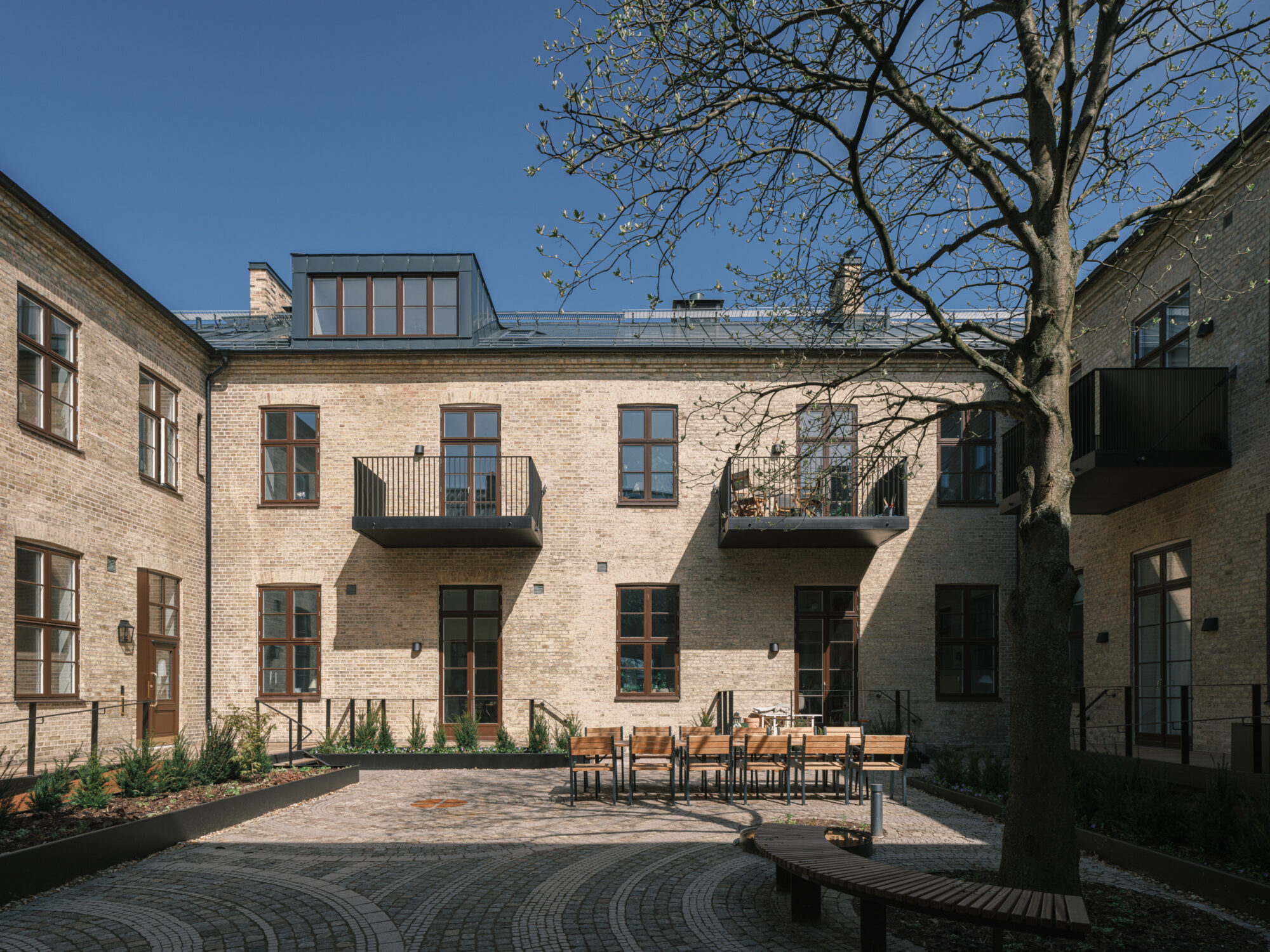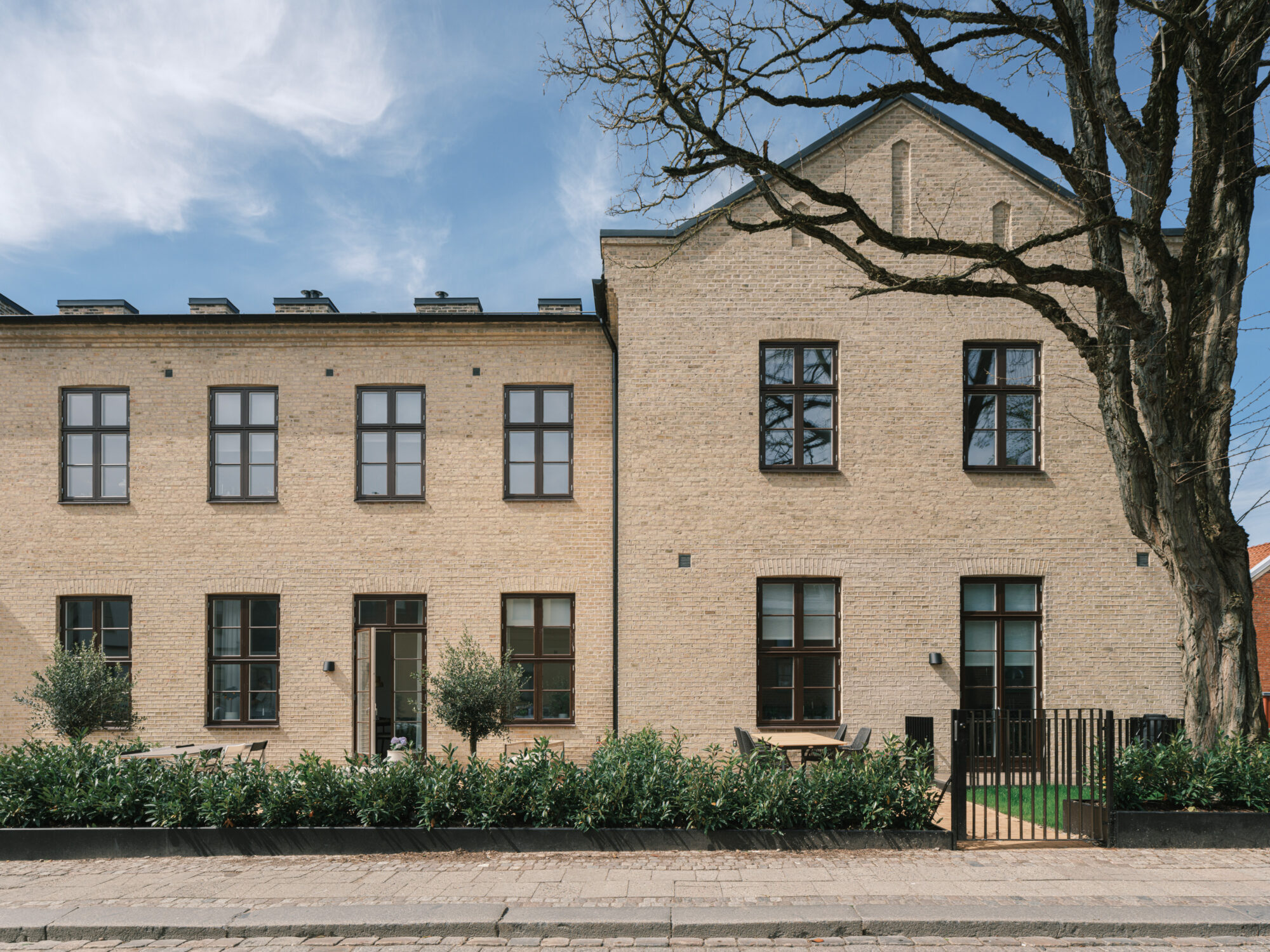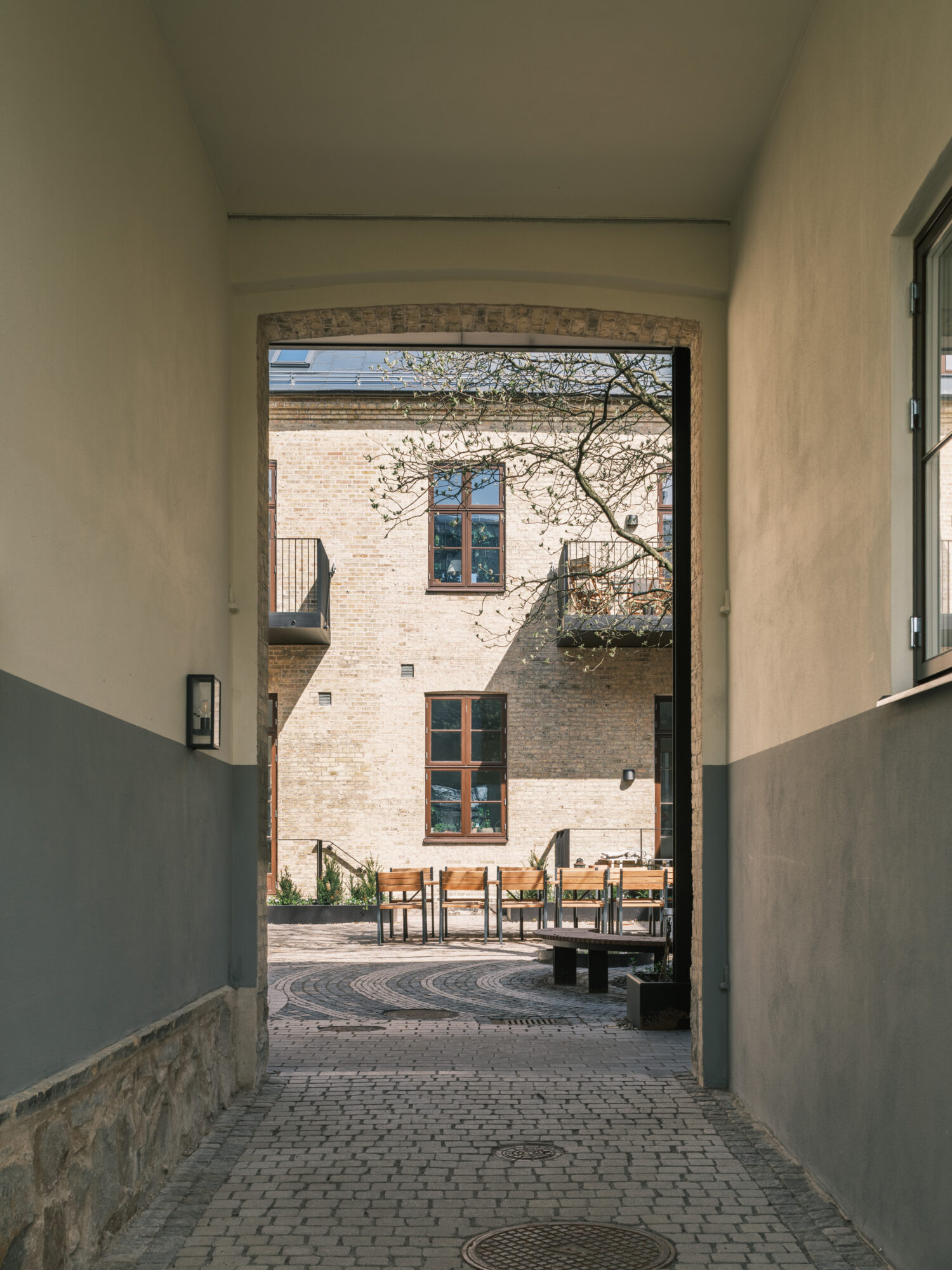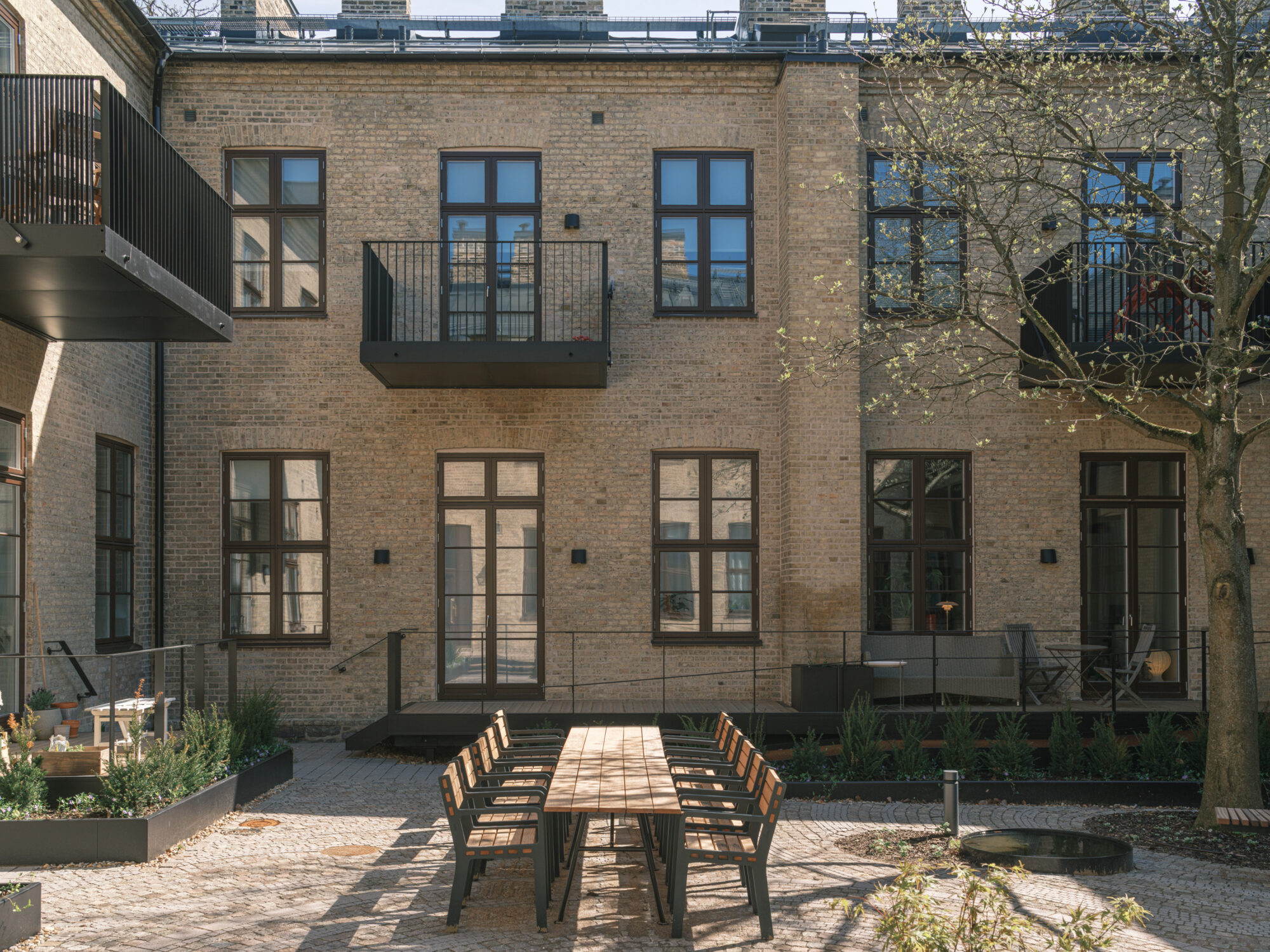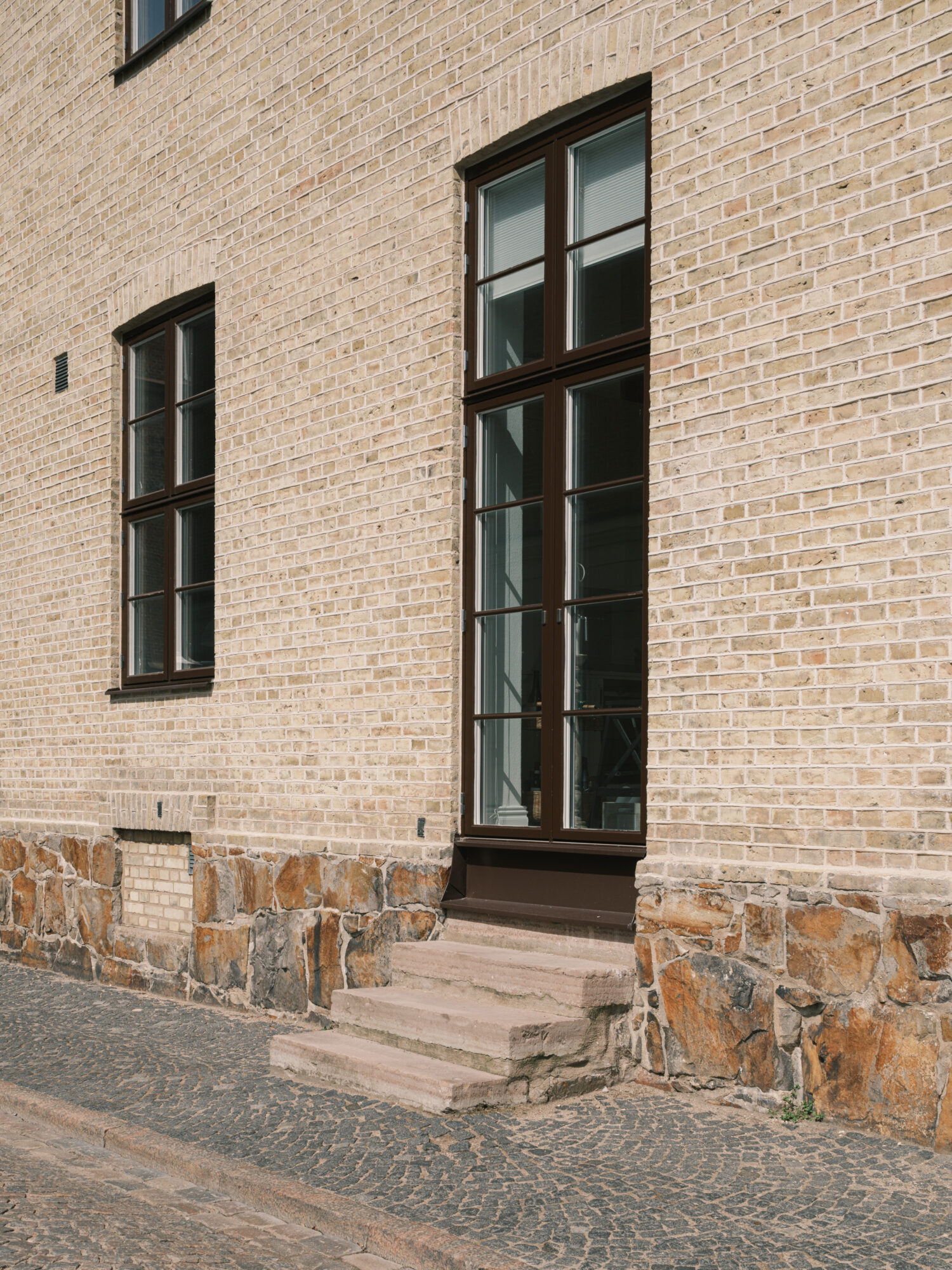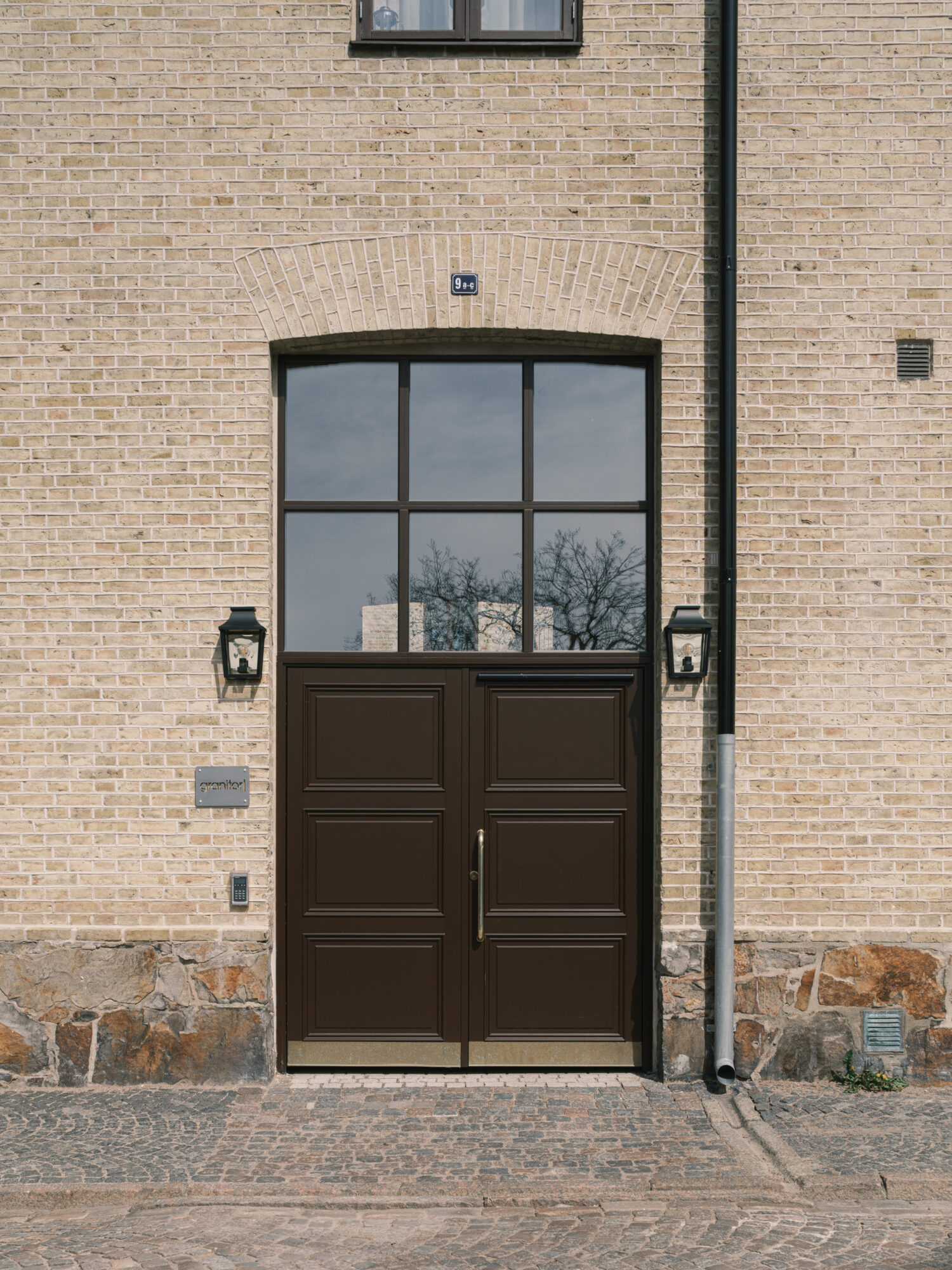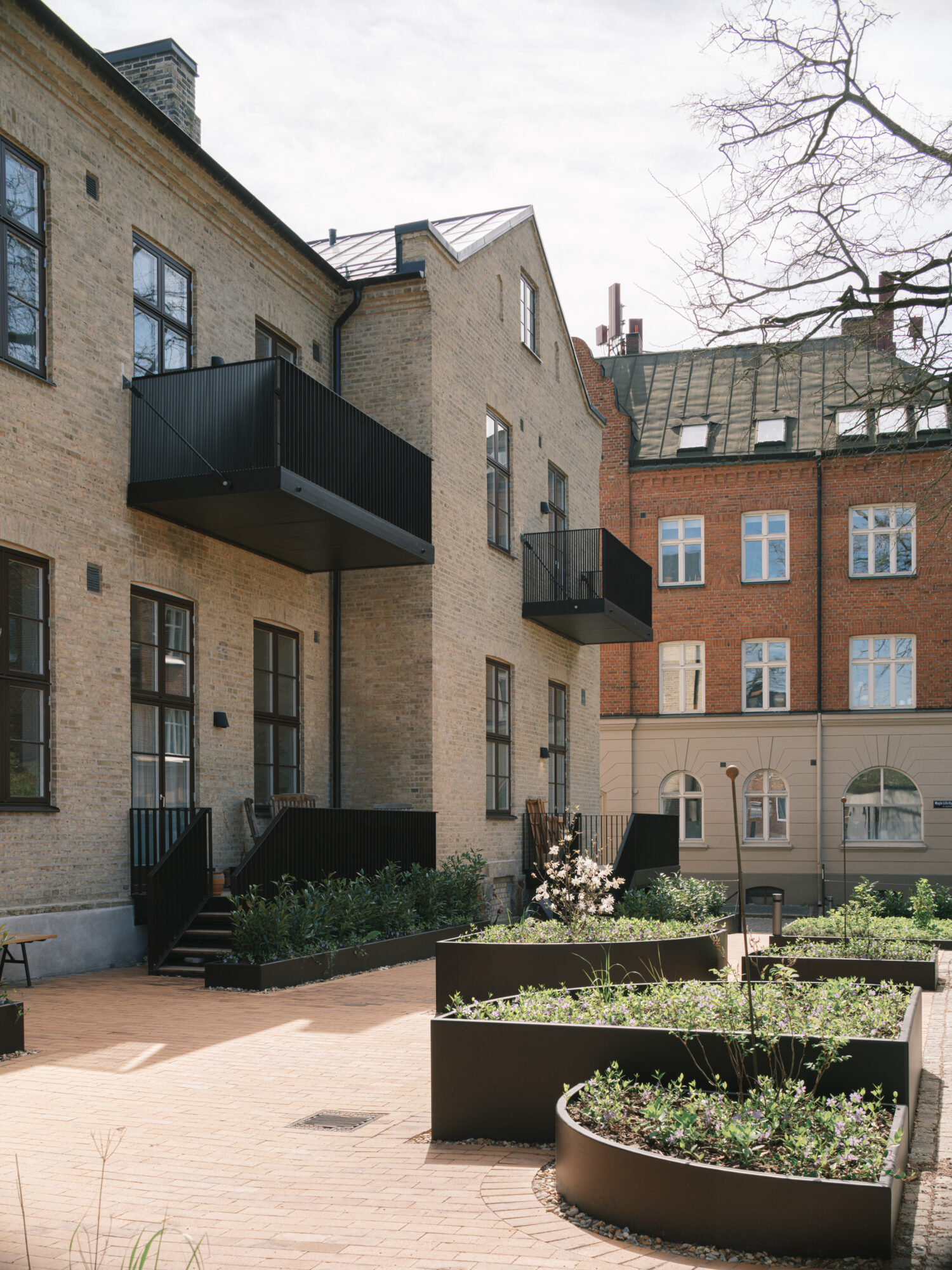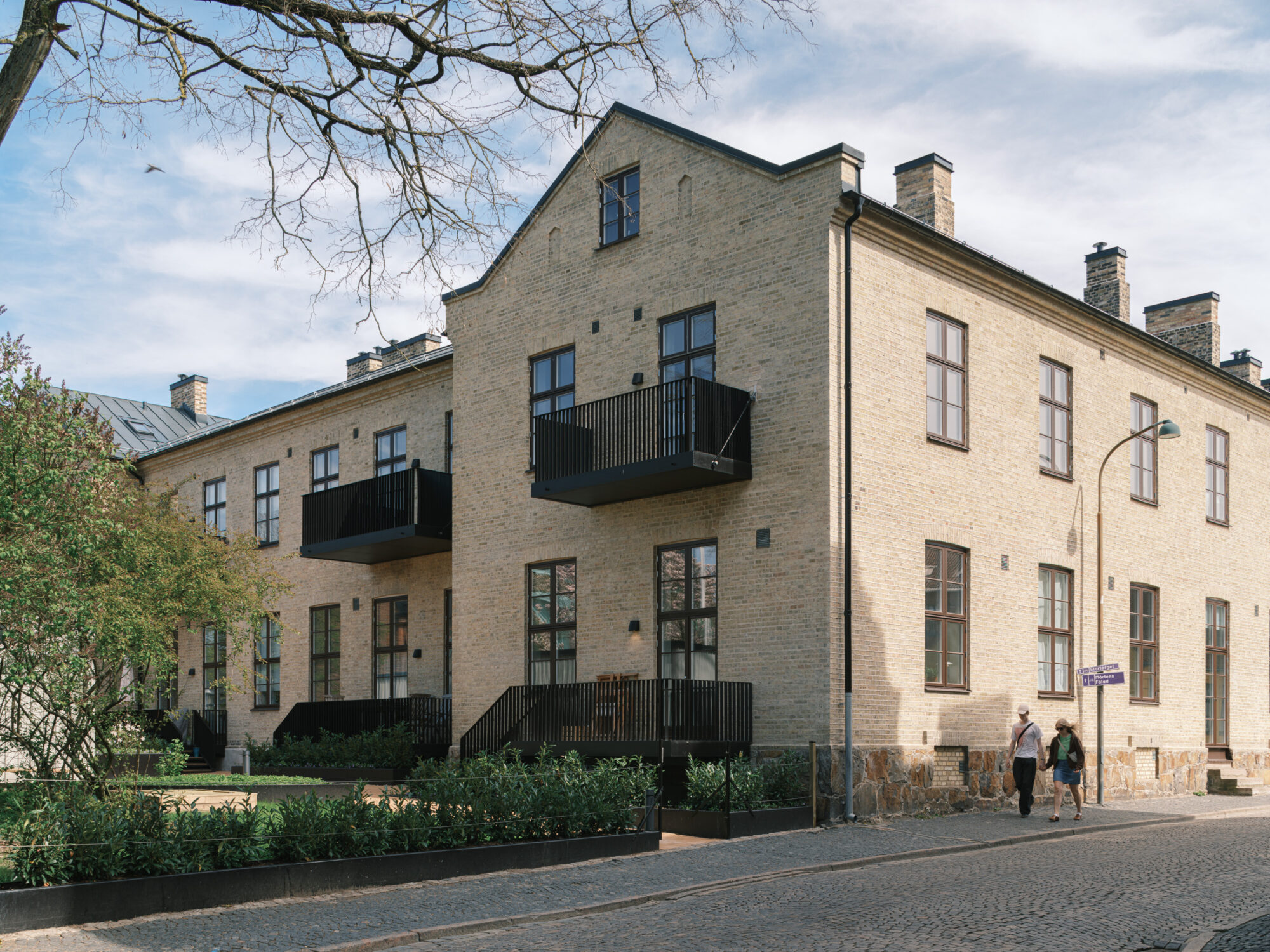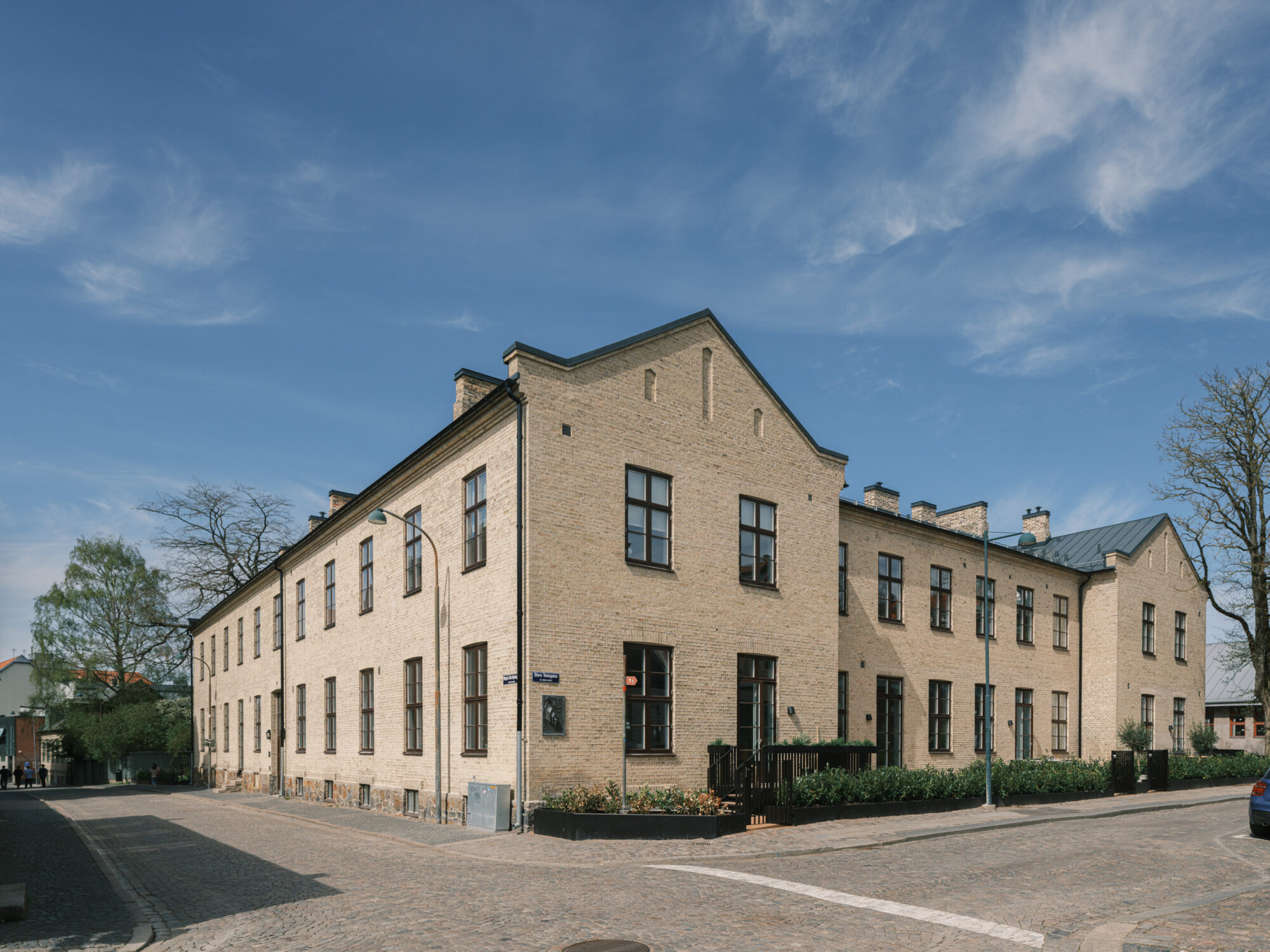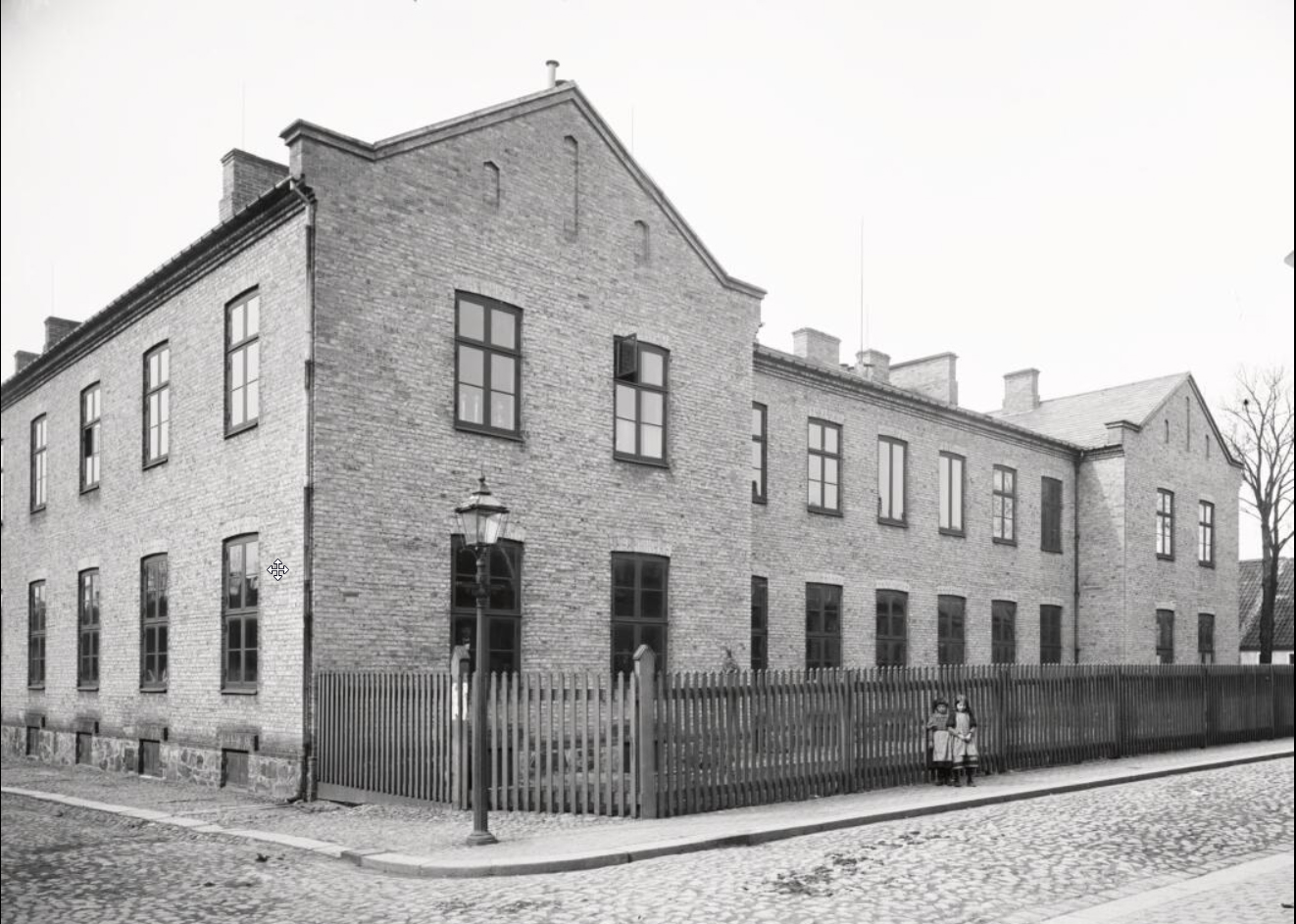Kv. Maria Magle
One of Lund's oldest institutional buildings has been converted into housing - carefully and on the building's terms.
In the middle of the Culture Quadrant in Lund, a stone's throw from the Cathedral, is the historic Maria Magle block. In the 13th century there was a church here, for several hundred years after the church was demolished there was a cemetery on the site and in 1863 the Department of Chemistry was built. In 1959 the building was handed over to the Department of History but since 2014 it has been empty.
The house occupies the entire block and is built around a green courtyard. With its yellow brick facade from Lomma Tegelbruk and sandstone plinth from Hardeberga quarry, the building is representative of the 19th century. The handmade brick, the regular window arrangement, and the sheet metal roof remain, as do the unusually many chimneys that are reminiscent of an activity where ventilation was particularly important.
In order for the house to last another hundred years, a thorough overhaul of the masonry has been done, windows have been carefully opened up to window doors and period attributes are recreated with respect to what the house and the Cultural Quadrant represent. The largest architectural addition to the exterior is the new exterior balconies, entrance staircases, railings and attic walkway, which are made of elegant black-painted wrought iron.
In the courtyard, components from the site's various cultural layers reappear in a new form. For example, there used to be a well in the courtyard, which is picked up and redesigned in the form of a water mirror. Traces of a church wall are visible as a rougher line in the paving. The paving stones are reused in a new stonework inspired by motifs on the flooring of the church, sun crosses, found during a previous archaeological investigation. The sun cross is also repeated in the plantings.
